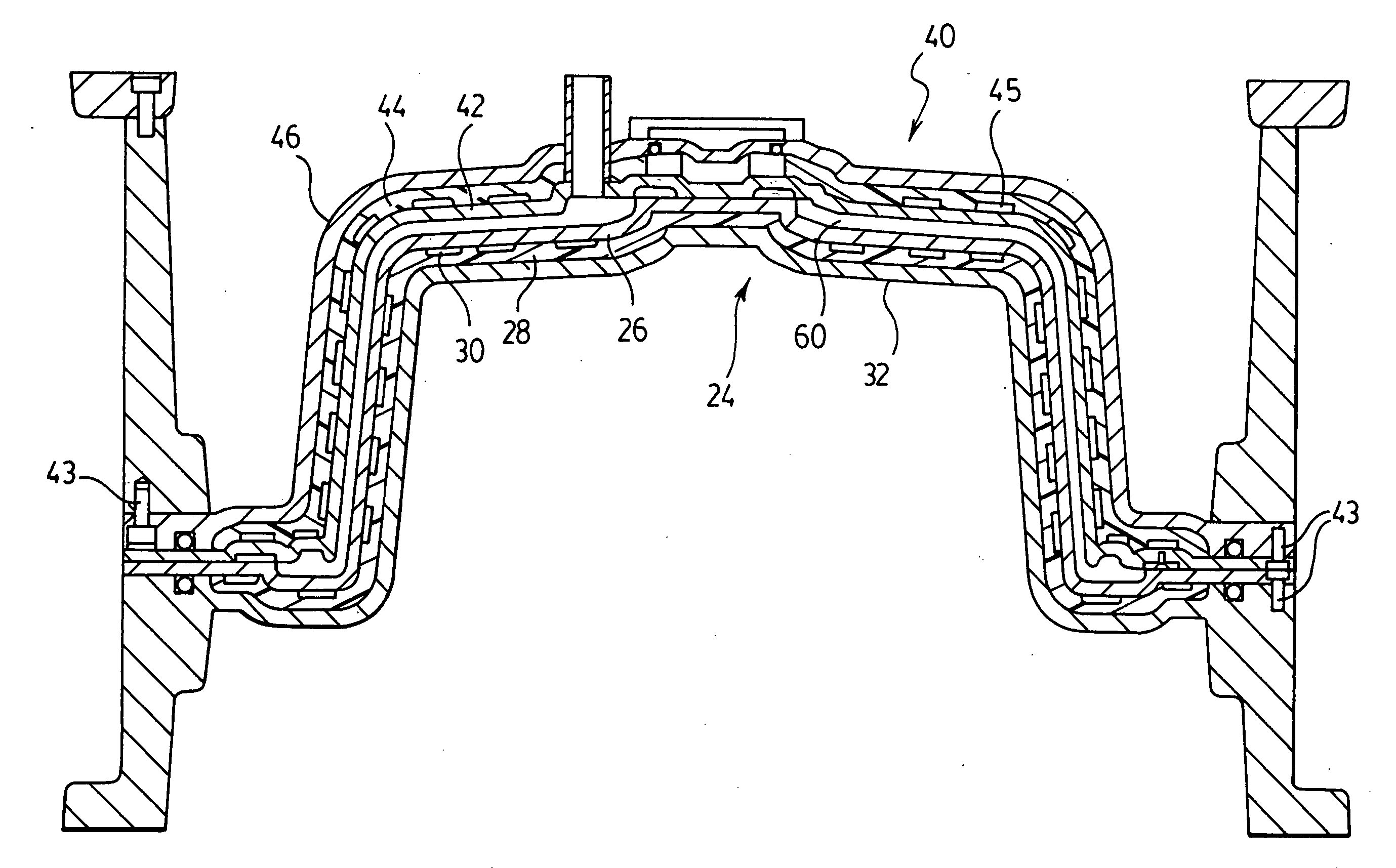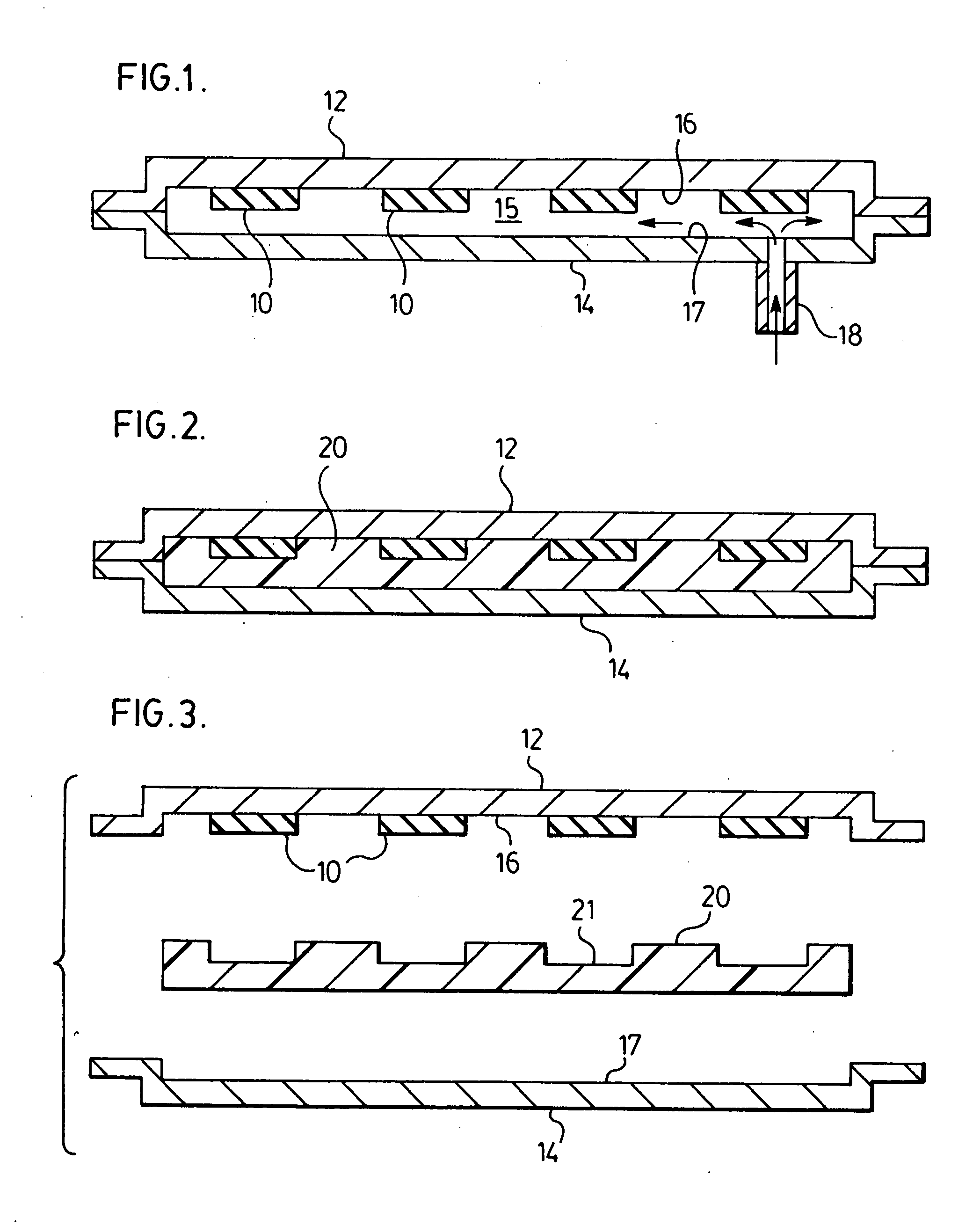Method for producing molding shells
a molding shell and thermoset technology, applied in the field of thermoset molding, can solve the problems of affecting the quality of the molding shell, the inability to easily repair the hard shell, and the piping breakage, and achieve the effect of simple and reliable operation and substantially free of corrosion
- Summary
- Abstract
- Description
- Claims
- Application Information
AI Technical Summary
Benefits of technology
Problems solved by technology
Method used
Image
Examples
Embodiment Construction
[0031]FIGS. 1-6 illustrate schematically the method of the invention for forming a flexible elastomer polymer fluid jacket with heating / cooling channels. A flexible material such as modelling clay or plastecine is extruded into an elongated channel former 10 having a profile of a desired channel cross-section, preferably about 5 mm thick and 25 mm wide. Channel formers 10 are then adhesively attached to the back of a metal mold shell, such as nickel shell 12, in a continuous or intermittent linear or sinusoidal pattern, as typified in FIGS. 9 and 11. Although the description will proceed with reference to nickel shells, it will be understood that other metal shells such as aluminum or steel shells are contemplated. The support casting 14, preferably a cast aluminum structure, is fastened to the back of the nickel shell 12 to define a space 15 about 10 mm wide between the rear surface 16 of the nickel shell 12 and the opposed surface 17 of the support frame 14. There is thus a design...
PUM
| Property | Measurement | Unit |
|---|---|---|
| thick | aaaaa | aaaaa |
| thick | aaaaa | aaaaa |
| pressure | aaaaa | aaaaa |
Abstract
Description
Claims
Application Information
 Login to View More
Login to View More - R&D
- Intellectual Property
- Life Sciences
- Materials
- Tech Scout
- Unparalleled Data Quality
- Higher Quality Content
- 60% Fewer Hallucinations
Browse by: Latest US Patents, China's latest patents, Technical Efficacy Thesaurus, Application Domain, Technology Topic, Popular Technical Reports.
© 2025 PatSnap. All rights reserved.Legal|Privacy policy|Modern Slavery Act Transparency Statement|Sitemap|About US| Contact US: help@patsnap.com



